Patella dislocations are a common injury and account for approximately 2 to 3% of all knee injuries (Atkin et al, 2020). A patella dislocation occurs when the patella (kneecap) moves out of the groove in which it usually sits, typically shifting in an outward direction. The patella can either dislocate (completely pop out of this groove), or partially dislocate, known as a patella subluxation. Dislocation mostly occurs following a disruption of the medial patellofemoral ligament (MPFL), and can occur during both contact and non-contact activities. The recurrence rate following a first-time dislocation can be as high as 15-60% (Hayat et al, 2020).
Anatomy
The knee is comprised of 4 bones – the femur, tibia, fibula and patella. There are numerous ligaments and soft tissue structures that provide general stability to the knee complex. There are two main structures however, that provide significant stability and prevent patella dislocations. These are The Medial Patellofemoral ligament (MPFL) and the Vastus Medialis Oblique (VMO) muscle (quadricep muscle).

Why are the MPFL/VMO important?
The MPFL provides 50-80% of the mechanism that opposes or counteracts the lateral gliding (outward) movement of the patella (Brukner, 2018). This lateral glide is the common mechanism of a patella subluxation/dislocation and any injury resulting in MPFL laxity or a tear to this ligament will increase the risk of recurrent dislocations. There are other structures in the knee that although are important, have a lesser contribution to patella stability. The VMO is very important, as it acts as a dynamic stabiliser pulling the patella medially (inwards) and working in tandem with the MPFL to stop lateral gliding of the patella, thus preventing lateral dislocation.
Mechanism of Injury:
Patella Dislocations are typically a non-contact knee injury however they also arise following trauma. The most common mechanism for the non-contact injury occurs with a combination of knee flexion (bent) and valgus (buckling in) accounting for as many as 93% of all cases (Tsai et al 2012). This is often the result of side stepping or landing from a jump. Lateral dislocations that occur as a result of direct trauma are often caused by a direct blow to knee. Less commonly a medial dislocation can occur when the kneecap pops inwards with a blow to the outside side of knee and this often occurs following previous patellofemoral instability. (McCarthy et al, 2015)
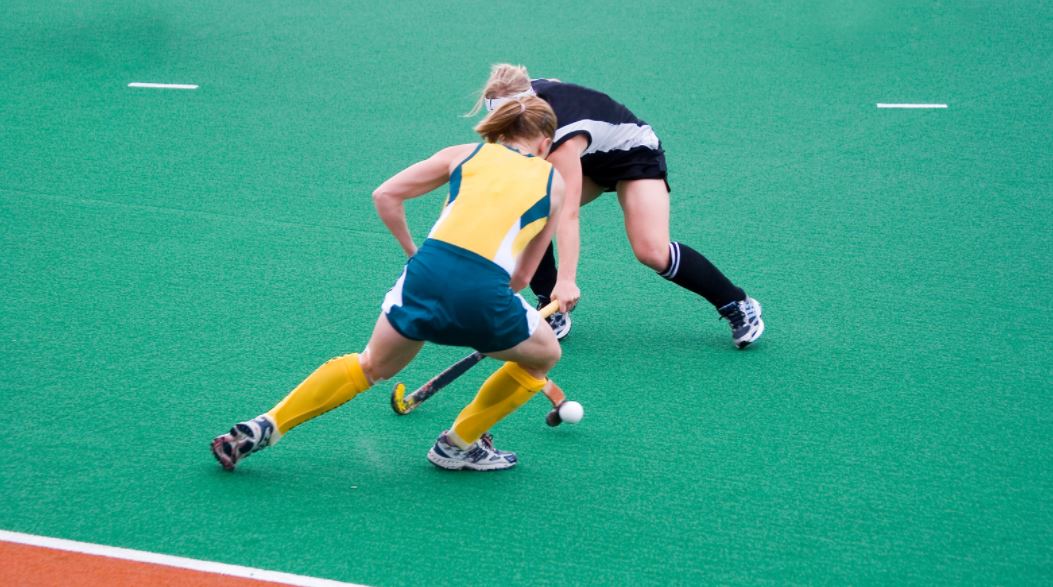
Risk factors:
- A persons knee can predispose them to dislocation
- Generalised ligamentous laxity/hypermobility
- Females: higher risk due to increased Q angle (hip to knee)
- Biomechanical: Muscle imbalance/poor activation/strength
- Previous injury
- Excessive weight/Obesity
- 15-60% recurrence rate after first dislocation if not surgically managed (Hayat et al. 2020)
Examination and Diagnosis
The patient usually complains that the knee gave way suddenly while twisting or jumping. Patients often describe the feeling of something moving or popping out. The dislocated patella will usually relocate spontaneously with knee extension, however in severe cases the patient may need to have a nerve block and medical assistance for relocation to occur.
Patients typically present to the clinic with a rather swollen knee, and they are often unable to straighten their knee out. They are often unable to weight bear and at best a limp is normally present. Clinically there are a series of tests that are positive.
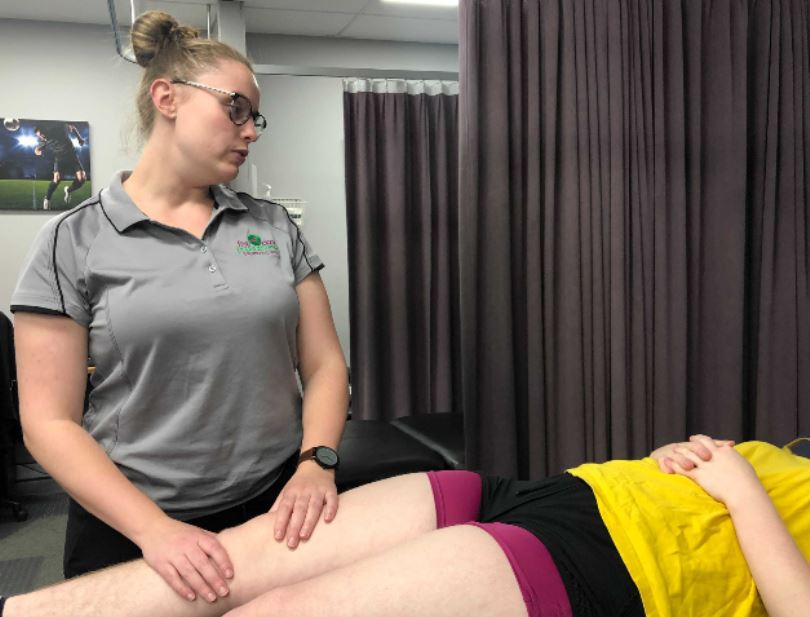
Imaging is often required to help diagnose the extent of the damage to the structures within the knee. An X-ray can help determine the possibility of a patella fracture. An MRI will confirm the presence of the MPFL being torn, probable retinacular injury, bone bruising and also help rule out the presence of other injuries such as ACL, PCL, MCL, meniscal tears or fat pad irritation.
Management
Patella dislocations can be treated with both surgery and non-surgically, depending on individual factors.
Conservative management is the most common form of treatment after a patient’s first patella dislocation except in specific circumstances:
- Presence of an “osteochondral fracture”
- Substantial disruption of medial patella stabilisers (ligaments and retinaculum)
- Laterally subluxated patella with normal alignment of contralateral knee
- If it’s the second dislocation
- In patients not improving with appropriate rehabilitation
Typically when a patient presents to our clinic with a patella dislocation our physiotherapists will organise appropriate imaging (X-ray & MRI) and liaise with the patient’s GP where necessary to arrange an orthopaedic surgeon’s opinion on management. A Zimmer splint or ROM brace is typically provided and knee ROM may be restricted to protect the joint. Crutches are often also prescribed and patella taping may also be indicated.
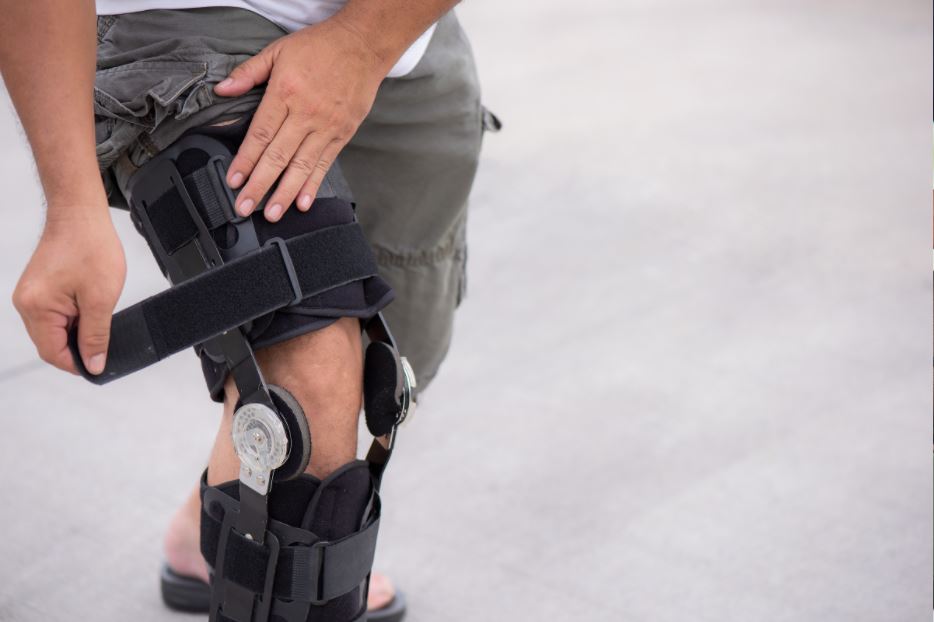
Rehabilitation for a patella subluxation or dislocation can start at day 1 once a fracture is cleared. This is typically in the form of simple muscle activation exercises, stretches, manual therapy including soft tissue work and ice. Compression is also helpful in managing swelling.
Physio rehabilitation whether conservative or post-operative will often follow a similar path. Initially physiotherapy focuses on protecting the area, reducing swelling and promoting VMO (quadriceps) muscle activation. From there we focus on restoring a normal walking gait, improving total leg strength and activation (core, hip and calf muscles) and also regaining normal movement of the knee. There is a particular focus on quadriceps strengthening, and specifically VMO training as mentioned earlier this muscle acts as a dynamic stabiliser of the patella, holding it medially.
Manual therapy, including mobilisation, plays an important role in gaining symptom relief, restoring knee movement and reducing muscle compensations and muscle overactivity throughout rehabilitation.
As total leg strength improves and there is a return to normal activities of daily living both taping and a functional J brace can assist with control of the patella and improve a patient’s confidence in their knee.
Once the patient has achieved significant VMO activation and strength, they can begin more dynamic movements such as simple hopping and jumping. Following on from this, they can begin to jog and run under the guidance of a physiotherapist. If there is no pain or instability, an agility program can begin consisting of plyometric work, change of direction and a progressive sprinting program. This ultimately leads towards a safe return to training and sport.
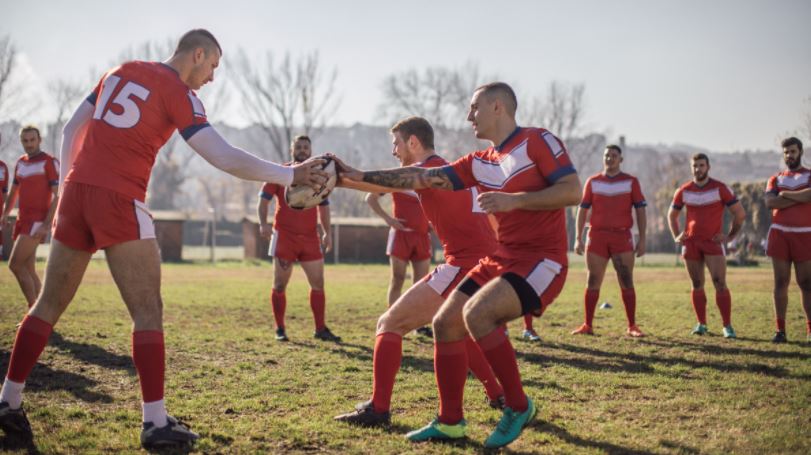
Conclusion
Unfortunately, Patella dislocations are a serious injury that can affect everyday life, work and also affect both leisure and sporting activites. Fortunately, though, these injuries can be treated with great success by our team at Five Dock Physiotherapy & Sports Injury Centre with comprehensive rehabilitation programs for both surgical and conservatively managed cases. Timely assessment, diagnosis and management of a patella dislocation injuries can result in extremely positive patient outcomes. The most important aim of rehabilitation after a patella dislocation is to reduce the chances of a recurrent injury and restoration of strength. Improvements in biomechanics play a vital role in this and can facilitate a return to a normal lifestyle.
Have you injured your knee and need some help?
GET AN ASSESSMENT & TREATMENT WITH OUR AMAZING PHYSIO TEAM.
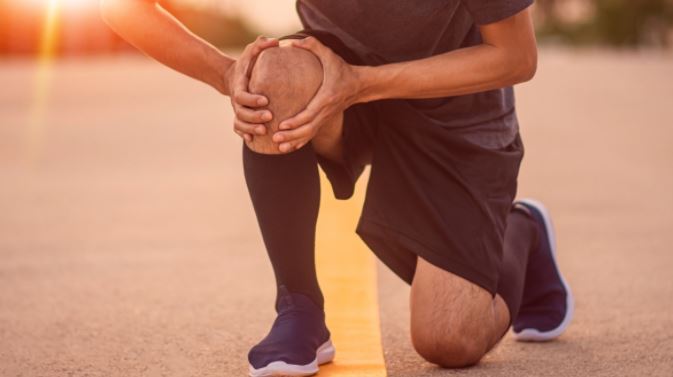
- Get a crystal clear diagnosis on what’s causing your pain or injury
- Understand what activities you can do without suffering further consequences of knee pain and injury
- Commence rehabilitation improving your mobility and helping you get symptom free
- Set out a management plan so that you can achieve the best results
- Leave the session with the confidence of knowing exactly what to do to help you get pain free and back to sport, activity and full function
